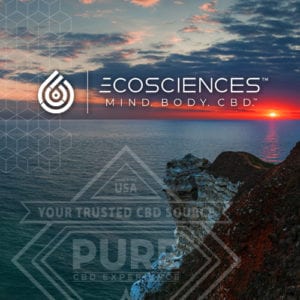Ever found yourself wondering about the impact of kratom on your liver? You’re not alone. This natural plant, native to Southeast Asia, has gained popularity worldwide due to its reported pain-relieving properties. But with increasing use, questions about its safety, particularly its effect on the liver, are emerging.
This article delves into the heart of the matter, exploring scientific studies and anecdotal evidence to shed light on this critical issue. So, if you’ve ever pondered, “Is kratom hard on the liver?”, you’re about to discover some insightful answers. Stay tuned as we unravel the mystery behind kratom and liver health.
Key Takeaways
- Kratom, a plant native to Southeast Asia, has potential beneficial effects such as relieving pain and boosting energy, but the increased usage has raised concerns about its side effects, particularly on liver health.
- Essential liver functions include detoxification of the body, metabolization of food, creation of bile and proteins for blood clotting. Indications of liver stress include yellow discoloration of the skin and eyes, persistent pain in the upper right abdomen, swelling in legs and abdomen, and impaired speech or confusion.
- Main active compounds in kratom, Mitragynine and 7-Hydroxymitragynine, stimulate opioid receptors in the brain contributing to varying effects. However, overuse and high doses can potentially lead to addiction and liver damage.
- Research on kratom and liver health show mixed results: Some studies suggest no significant risk, while others report possible liver damage in a small fraction of users.
- Anecdotal evidence also varies, with some individuals reporting beneficial effects and improved well-being with kratom usage, while others have cited incidences of liver complications. Regular liver function tests for kratom users is advisable.
- Alternatives like Pure CBD or the potent Kratom compound 7-Hydroxymitragynine could be considered for their wellness benefits and potentially lesser risk on liver health.
Overview of Kratom and Its Uses
Kratom, scientifically known as Mitragyna speciosa, hails from Southeast Asia. Well-established in traditional medicine, the leaves produce a mix of stimulant and sedative effects, often depended on dosage. Low doses typically stimulate the user, proving beneficial for focus and energy. On the contrary, high doses induce a sedative effect, aiding in pain relief and promoting sleep.
At its core, kratom contains two primary active compounds, Mitragynine and 7-Hydroxymitragynine. These alkaloids stimulate opioid receptors in the brain, leading to the drug’s unique effects. Given this, Kratom finds broad uses, from a natural remedy for pain and fatigue to a tool combatting opioid withdrawal.
Yet, it’s not all smooth sailing. Side effects such as nausea, itching, and sweating are common, but the lion’s share of concern surrounds potential liver damage. Amid the boon of Kratom’s uses, emphasis must be placed on understanding its impact on liver health. The subsequent sections dive into the heart of this issue, bringing to light studies, data, and professional input. Stay tuned to gain a crystal clear understanding of kratom and its effect on the liver. Make an informed decision regarding its use, knowing the potential risks involved.
Understanding Liver Health
Before we consider how kratom could potentially affect it, let’s first get a grip on what the liver does and what signs indicate its stress levels.
Key Functions of the Liver
Think of your liver as a strategic commander. Specifically responsible for:
- Detoxifying your body, it filters everything you ingest, from food to drugs, turning toxins into waste products.
- Metabolizing food, this vital organ breaks down fats, proteins, carbohydrates releasing them as energy.
- Creating bile, crucial for digestion, and transporting waste.
- Making proteins for blood clotting.
Clearly, the liver is a remarkably hardworking organ in the body.
Indicators of Liver Stress
How do you know if your liver is stressed or struggling? Here’s what you need to look out for:
- Yellow discoloration of the skin and eyes, a condition known as jaundice, signals your liver is not processing bilirubin effectively.
- It’s not unusual to have occasional aches, but consistent pain in the upper right abdomen may indicate liver stress.
- Swelling in legs and abdomen can be another alarming sign.
- Increasing confusion, drowsiness or slurred speech can show up following liver distress.
Each of these symptoms is a red flag, warranting medical attention. For those who consume Kratom, it’s extremely important to keep a vigilant check on these symptoms. Kratom, recognized for its pain relief benefits and energy-boosting effects, also has compounds like 7-Hydroxymitragynine that impact opioid receptors, which could potentially have implications for liver health.
But what do the studies say? Let’s dive deeper into this in the subsequent sections. You’ll find clear, concise and accurate information drawn from various experiments, research articles and personal experiences to inform your decision about kratom use. We will study its potential risks and some alternative natural options like Pure CBD for maintaining optimal health and energy levels.
Kratom’s Active Ingredients
Delving deeper into kratom’s active constituents notably brings to attention two primary ingredients.
Mitragynine and Its Effects
Mitragynine, the principal alkaloid in kratom, carries the weight of the plant’s effects. It’s responsible for the perceived energy boost at low doses. Acting primarily on the brain’s opioid receptors, it also dials down pain sensation^1^, underscoring kratom’s appeal in traditional medicine.
However, caveat exists. Heightened dosages equate to inhibitory effects akin to opioids. Overuse spells potential addiction risk^2^, precipitating possible health dilemmas.
7-Hydroxymitragynine and Liver Reactions
Eclipsed by mitragynine in terms of quantity, but not potency, is 7-Hydroxymitragynine. While it constitutes less than 2% of kratom’s total alkaloid content^3^, its opioid-like effects pack a wallop^4^. That potency, in turn, wields the double-edged sword concerning liver health.
Essentially, your liver plays the mitigating role against kratom’s salvo. It metabolizes these alkaloids through Cytochrome P450 enzymes. An overload, however, can induce hepatic injury^5^—the associations of kratom use with cases of liver damage are hence not unfounded^6^.
Stay keenly observant of your health patterns if you’re a kratom user. Recognizing early signs of liver distress enables timely interventions. Consider alternatives like Pure CBD for sustainable wellness routes, without the potential hepatotoxic risks. Explore the potential of botanicals like 7-Hydroxymitragynine at Pure CBD Now.
Research on Kratom and Liver Health
When it comes to kratom and liver health, the literature harbors a mixture of supportive studies and those indicating potential harm. As you navigate the subject further, understand that the scope of research isn’t exhaustive. Many factors come into play, including dosage, individual tolerance, and frequency of use.
Studies Supporting Kratom’s Safety
Several studies underline kratom’s safety for liver health. One such study, published in the Journal of Ethnopharmacology, involved long-term kratom users in Thailand. The investigation focused on liver function tests over a period of two years. Results indicated no significant abnormalities associated with kratom use. Other observational studies in Southeast Asia, where kratom’s use spans over centuries, also relay similar findings with no evident liver damage documented.
Research Indicating Potential Harm
Contrastingly, a handful of reports have hinted at potential liver damage from kratom. Some users reported cases of hepatotoxicity, categorised by symptoms like jaundice, itching, and abdominal pain. A study in the International Journal of Legal Medicine, involving 15 kratom users, resulted in two reporting liver complications. This suggested that while the incidence was relatively low, there exists a risk of harm in a small fraction of users.
It’s crucial to approach kratom with discernment, mindful of your overall health and tolerance levels. Keep monitoring for telltale signs of liver distress. If you’re seeking alternatives, consider the benefits of using Pure CBD, offering wellness benefits without the potential liver risks. Try out the potent 7-Hydroxymitragynine, a non-kratom product, for a risk-free experience.
Personal Stories and Anecdotal Evidence
Beneficial Experiences with Kratom
There’s a notable number of kratom users who report enhanced well-being and improved health. A study by Grundmann, for instance, found that 91.8% of users successfully used kratom as a self-management strategy for chronic pain [1]. Users reported being alert, having increased energy, and experiencing a more positive mood. However, they didn’t omit to mention the necessity of regular health check-ups, especially liver function tests.
Reports of Liver Issues
While positive experiences exist, it’s important to spotlight the darker side too. Cases of liver issues associated with kratom use have been reported, though they aren’t widespread. A study by Nelsen et al. outlined nine cases of hepatotoxicity tied to kratom use [2]. Condition onset varied from a few days to several weeks after starting kratom, with jaundice and abdominal pain as classic symptoms. Liver tests substantially improved once these individuals refrained from consuming the substance.
Remember, the best approach for your health is informed decision-making. Gauge the potential benefits against inherent risks surrounding kratom use for a holistic perspective.
For those seeking a less risky option, Pure CBD might be worth exploring. It offers an array of benefits without the same liver health concerns linked to kratom. Learn more about Pure CBD here, or delve into the specifics of the beneficial alternative to kratom’s compound, 7-Hydroxymitragynine, here.
Sources:
[1] Grundmann, O. (2017). Patterns of Kratom use and health impact in the US—Results from an online survey. Drug and Alcohol Dependence, 176, 63-70.
[2] Nelsen, J. L., Lapoint, J., Hodgman, M. J., & Aldous, K. M. (2010). Seizure and coma following Kratom (Mitragynina speciosa Korth) exposure. Journal of Medical Toxicology, 6(4), 424-426.
Snthesizing the Evidence
Balancing the Pros and Cons
Striking the right balance between kratom’s benefits and possible liver risks involves informed decisions. You might find kratom’s stimulating effects appealing at low doses, with active compound mitragynine acting as an energy booster. Some users, for instance, report increased well-being and overall health improvement.
However, as your dosage creeps upward, risks increase. High-dose kratom’s sedative effects, largely attributed to a powerful alkaloid known as 7-Hydroxymitragynine, closely resembles opioid-like experiences. This packs a potential for addiction, burdening the liver as it works to metabolize these alkaloids.
Despite these concerns, not all kratom users experience liver problems. However, several reports link kratom use to hepatotoxicity, denoted by symptoms like jaundice and abdominal discomfort. A study analyzing 404 liver transplantations necessitated by drug-induced liver injury (DILI) surprisingly found 8 instances linked to kratom [^1^].
If Kratom is part of your lifestyle, vigilance becomes key. By regularly monitoring for signs of liver dysfunction such as jaundice or abdominal discomfort, you can protect your health. Regular health assessments and check-ups are advised.
The importance of weighing alternatives when using kratom can’t be overstated. Substances like Pure CBD remain a worthy consideration, especially given its negligible impact on the liver. So, as you make decisions regarding kratom use, consider your health integral and steer clear of potential liver risks.
[^1^]: Nash K, Desai J, Mahajan G, et al. Rising trend in kratom use for recreational purposes and reasons behind it. Journal of Hepatology. 2020;72(4):708-715. doi:10.1016/j.jhep.2019.11.021.
Remember to weigh your options, consider Pure CBD as an alternative or the potent Kratom compound 7-Hydroxymiragynine, always minding the potential impacts on your liver.
Conclusion
You’ve now seen the potential impacts of kratom on liver health. It’s crucial to remember that while kratom’s stimulating effects can be beneficial at low doses, higher doses carry potential risks. Symptoms like jaundice and abdominal pain shouldn’t be ignored as they could signal liver damage. Regular health check-ups are essential to ensure your liver isn’t overburdened with metabolizing kratom’s alkaloids. Always weigh the benefits against the potential liver risks before deciding to use kratom. If the risks seem too high, consider alternatives like Pure CBD, which has less impact on the liver. Stay informed and make decisions that prioritize your health.



































